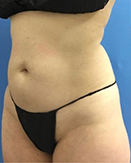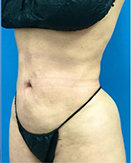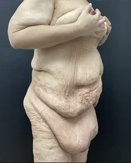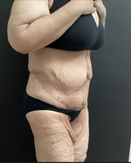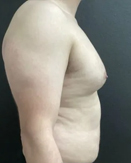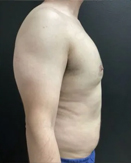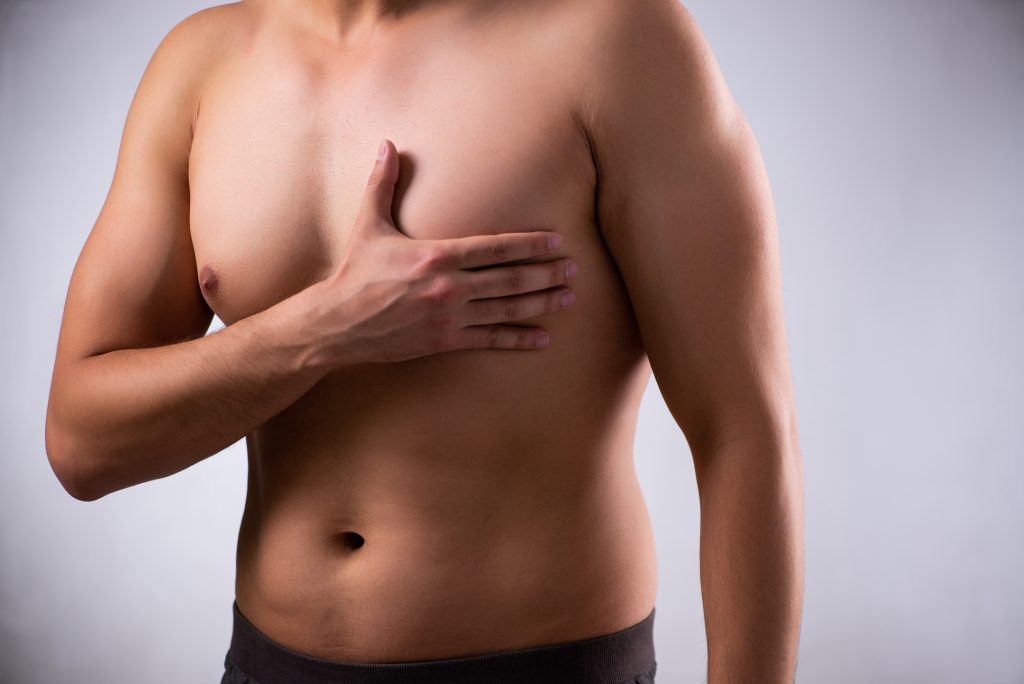Meet Patient “John”
John is a 37-year-old male with no history of health issues. He is a healthy eater and spends 3 to 4 nights a week in the gym — when he’s not on dad duty.
This summer, John’s family is planning a trip to the lake, but there’s something holding him back from being excited about this getaway with his family.
Typically, when John goes to the pool, the beach, or even the water park with his kids, he prefers to wear a shirt to cover up a bit. You’d think that after all of that time he spends in the gym, he’d want to show off his toned physique, right?
John has a condition called gynecomastia, or male breast tissue. This condition affects over 65% of the adult male population in the United States (and between 50 and 60% of adolescent males).
This condition can be caused by many factors but in many cases, it’s out of your control. The effects of the condition, aside from increased irritation and chafing in the area, include lowered self-confidence, depression, and an increased risk for breast cancer.
If you think you might have gynecomastia, you’re not alone – quite literally. More than 65% of the male population experiences your same struggles. You probably have a few questions about the condition.
HERE ARE THE 5 MOST COMMON QUESTIONS WE GET ASKED ABOUT GYNECOMASTIA AT NEW LIFE COSMETIC SURGERY AND WELLNESS CENTER:
- WHAT CAUSES GYNECOMASTIA?
It’s important to note that if you find yourself wondering if you have gynecomastia, in more cases than not, you did nothing to cause the condition.
Gynecomastia is typically idiopathic, meaning it occurs spontaneously and for no reason. It may also occur because of hormonal changes, heredity, obesity, or the use of certain drugs. Gynecomastia has also been linked to the use of marijuana, anabolic steroids, and other drugs that affect hormone levels. - WILL IT GO AWAY ON ITS OWN? ARE THERE ANY NATURAL REMEDIES I CAN TRY BEFORE OPTING IN FOR A SURGERY?
When it occurs during puberty in adolescent males, gynecomastia typically goes away after 6 months to 2 years.
If your teen is experiencing this condition, it’s best to wait it out while you help them find their self-confidence.
For adult men, the condition may persist, sometimes permanently. Surgery has proven to be the only consistently effective treatment for the condition, but you may have other options if you meet a few key characteristics.
If you’re overweight, losing weight and living a more healthy lifestyle can minimize the appearance of your breast tissue. If you have true gynecomastia, there may still be breast tissue left over, even when you otherwise look fit. Of course, in some cases, this weight loss can result in loose or sagging skin in the breasts, which may also require surgery to eliminate.
If you have a hormone imbalance that seems to be the cause of your breast tissue, taking medications to rebalance your hormones may be able to help, but it’s important to set proper expectations.
Both of these alternative solutions may not entirely get rid of your breast tissue. At this point, you might still be considering surgery. - WHEN SHOULD I SEE A DOCTOR?
There aren’t normally severe risks associated with gynecomastia, but once you notice the enlargement of breast tissue, it would be smart to bring it up to your primary care doctor.
Your doctor, if they feel it’s necessary, will likely try to explore and discover a cause for your excess breast tissue, just to confirm that there are not any other significant risks at play.
From there, the choice is ultimately yours if surgery seems like the best choice for your situation.
A good candidate for this procedure is someone who:- oftentimes feels self-conscious of their breast tissue
- avoids activities that require a bare chest (and instead prefer to cover up)
- feels like their body is out of proportion because of their enlarged breast tissue
- experiences pain or discomfort during physical activity because of enlarged breast tissue
- feels like their breast tissue leads them to have poor posture because of the extra weight
- has noticed a stabilization in their breast development
- is relatively healthy and committed to a healthy lifestyle after surgery
- does not smoke
- An incredibly common stigma among men in our society is that if you have conditions such as acne or male breast tissue, you just live with it. It’s “just part of being a man”. “You can’t just go get it magically removed with surgery like women can.”
But you CAN. You can change the things about your body that alter your confidence — using both alternative and surgical solutions.
Men deserve to feel confident in their bodies too. Let’s change this stigma. - WHAT IS GYNECOMASTIA SURGERY LIKE?
Surgery is seen as the most widely accepted solution to gynecomastia. In fact, male breast reduction surgery accounts for more than 40% of all breast reduction surgeries. In other words, you’re not alone if you choose to undergo surgery to remove your breast tissue.
After you consider whether or not surgery is right for you, the process is as follows:- Schedule a consultation with Dr. Lee to examine you and determine the best solution for your situation. If you feel hard/firm tissue under your nipple region and usually spreading a few centimeters outward then you most likely have glandular tissue that is removed through a small incision along the areola (dark pigment around the nipple). If you feel mores soft tissue then it may just be excessive fat that can be removed by liposuction. Sometimes there will be both types of tissue and it’s removed both by excising the glandular tissue and liposuction of the fatty tissue. Either way, Dr. Lee will assess your needs and help you determine the best course of action.
- On the day of your surgery, you will arrive at the office in the morning and be home in the afternoon.
- You’ll be placed under IV conscious sedation and NOT general anesthesia. This means you will sleep during the entire procedure but you will be breathing on your own and will not need to be intubated.
- You should notice a difference immediately after surgery, however, the results will improve over time as swelling goes down.
- After surgery, you should not lift anything heavier than a gallon of milk for at least 2 weeks after surgery. Eating a healthy, protein-rich diet can help promote good healing.
- You’ll see Dr. Lee the day after your surgery to remove the bandages. You may shower after this. We typically recommend that you do not return to work or drive until you are no longer taking prescription pain medicine.
- After swelling is completely gone, you will notice drastic results in your chest, including increased definition in your pectoralis muscle. You will probably also feel a significant increase in confidence in your body — which can be life-changing for some patients.
- You can check out the results of this procedure here.
- HOW CAN I PREVENT GYNECOMASTIA FROM REOCCURRING AFTER SURGERY?
Typically, the results of your surgery will be permanent.
This is completely dependent, however, on your commitment to leading a healthy and active lifestyle after surgery. Should you gain weight, you may also notice the return of breast tissue.
Following post-procedure practices like wearing a compression vest, eating a healthy and protein-rich diet, and increasing water intake can also help you heal more effectively and may lead to more desirable results.
If you think you might have gynecomastia or a similar issue, we encourage you to reach out to schedule a consultation with Dr. Lee to explore your options and see if surgery is the right option for you.
We’ll be waiting for you!
